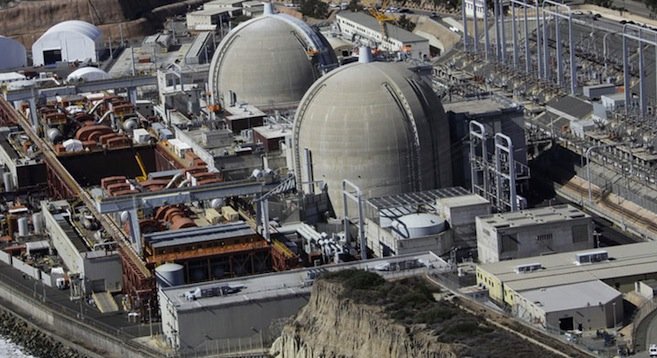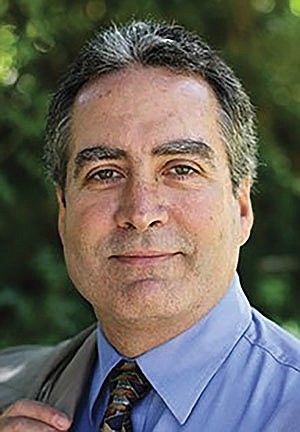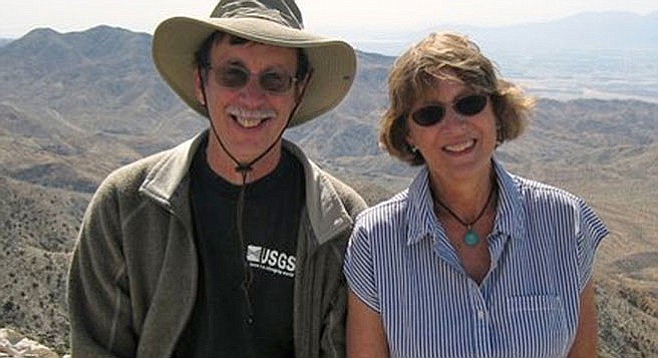 Facebook
Facebook
 X
X
 Instagram
Instagram
 TikTok
TikTok
 Youtube
Youtube

Ray Lutz of Citizens' Oversight has published a new study suggesting that nuclear waste should possibly be disposed of locally, with each state responsible for its own spent fuel. Lutz says moving the waste long distances can be a difficult problem. Also, the study stresses that the waste be buried in double-layer canisters, not single-layer ones.

The study, "A New Strategy: Storing Spent Nuclear Fuel Waste," states, "'Local' implies that the waste will likely be moved from the on-site situation but not moved all the way across the country. There is a fairness to the idea that each state should be responsible for [its] own waste in a suitable location."
Southern California Edison has plans to bury spent nuclear fuel from the now-closed San Onofre plant to spots only 100 feet from the ocean. Many think that is crazy. Edison has agreed to consider moving the waste elsewhere, although it says it is "practicing" going ahead with the original plan to put it near the ocean.
An August agreement calls for all parties to investigate possible distant sites, including Palo Verde in Arizona (part-owned by Edison) and a location in New Mexico. Lutz points out that the agreement does not ban any other site — hence, a site in California could work, but there would be problems.

San Diegans William and Rosemarie Alley, authors of Too Hot to Touch, a book on the problems of burying radioactive waste, praise Lutz's new study. The Alleys, who concentrate on transportation problems, would like to see San Onofre waste moved a short distance to Camp Pendleton, although that would require many steps, including getting the military's permission.
"There is a mesa at Camp Pendleton, a perfect place for moving the waste," says Rosemarie Alley. Lutz says that a move to Pendleton would be permissible under the August agreement.


Ray Lutz of Citizens' Oversight has published a new study suggesting that nuclear waste should possibly be disposed of locally, with each state responsible for its own spent fuel. Lutz says moving the waste long distances can be a difficult problem. Also, the study stresses that the waste be buried in double-layer canisters, not single-layer ones.

The study, "A New Strategy: Storing Spent Nuclear Fuel Waste," states, "'Local' implies that the waste will likely be moved from the on-site situation but not moved all the way across the country. There is a fairness to the idea that each state should be responsible for [its] own waste in a suitable location."
Southern California Edison has plans to bury spent nuclear fuel from the now-closed San Onofre plant to spots only 100 feet from the ocean. Many think that is crazy. Edison has agreed to consider moving the waste elsewhere, although it says it is "practicing" going ahead with the original plan to put it near the ocean.
An August agreement calls for all parties to investigate possible distant sites, including Palo Verde in Arizona (part-owned by Edison) and a location in New Mexico. Lutz points out that the agreement does not ban any other site — hence, a site in California could work, but there would be problems.

San Diegans William and Rosemarie Alley, authors of Too Hot to Touch, a book on the problems of burying radioactive waste, praise Lutz's new study. The Alleys, who concentrate on transportation problems, would like to see San Onofre waste moved a short distance to Camp Pendleton, although that would require many steps, including getting the military's permission.
"There is a mesa at Camp Pendleton, a perfect place for moving the waste," says Rosemarie Alley. Lutz says that a move to Pendleton would be permissible under the August agreement.
Comments